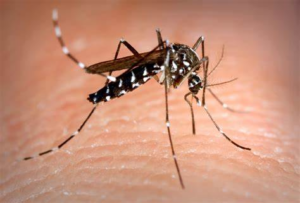The 9 most contagious diseases
3 min read
Common cold
Caused by more than 200 different viruses, nasopharyngitis—or the common cold—affects people of all ages every year. Adults suffer from colds two to four times a year, while children under the age of two can catch up to 10 colds a year. Touching your face after handling a contaminated object causes the majority of colds. The most common symptoms are fatigue and a congested or runny nose. The common cold does not usually have any after-effects, but it can sometimes lead to more serious complications. Some people, especially seniors, can develop pneumonia or meningeal syndrome.
Flu (influenza)
The virus responsible for the flu is particularly contagious and can live up to 48 hours on surfaces. That means you can catch the flu by simply handling contaminated objects. The same applies if you come into contact with contaminated droplets released into the air by an infected person. Flu symptoms include fever, sudden cough, sore throat, severe fatigue, headache, and muscle and joint pain, but someone with the flu can be contagious even before symptoms appear. In fact, some patients are contagious up to 24 hours before the first signs become evident. For certain at-risk individuals, influenza has serious consequences, such as hospitalization and even death.
Chickenpox
Chickenpox is a highly contagious disease. Before the development of vaccines, half of all children got the disease by age 5, and 90% by age 12. The virus responsible for this infection, which manifests as small, fluid-filled pimples, is spread mainly through the air. Even when an infected person is no longer in the room, the virus can remain suspended in the atmosphere for several hours. In pregnant women, chickenpox sometimes causes malformations in the fetus.

Cytomegalovirus
While cytomegalovirus (CMV) is fairly benign in children and adults, it is particularly dangerous for pregnant women. Babies born to infected mothers can suffer from deafness, blindness, or intellectual deficiencies. It’s estimated that most adults under the age of 40 (50% to 80%) have already been infected with CMV. The major vectors of transmission include urine and saliva, so it’s important that pregnant women avoid sharing dishes with others, especially their children, and that they wash their hands regularly.
HIV
As of 2019, approximately 38 million people worldwide are living with the human immunodeficiency virus (HIV). HIV is transmitted through sexual intercourse or blood. Use of non-sterile equipment is one culprit. Contrary to popular belief, you cannot get HIV from bathing or using a public toilet. In addition to fever, headache, and muscle and joint pain, HIV-infected people sometimes lose a lot of weight and suffer from nausea and diarrhea. That said, others will remain asymptomatic.
Strep throat
Strep throat is one of the most common causes of sore throat in children (20% to 30% of cases) and adults (5% to 15% of cases). The bacteria responsible for this illness becomes airborne when an infected person spreads droplets by sneezing or coughing. The discovery of antibiotics has now made the risk of developing complications from strep throat quite rare.
Hepatitis B
One of the most common ways of spreading hepatitis B is through sexual intercourse. However, you can also get the disease by coming into contact with the saliva, breast milk, urine, tears, or blood of an infected person. While most people manage to eliminate the virus from their systems after a few months, 5% to 10% of patients become chronic hepatitis B carriers. The most common symptoms include loss of appetite, liver pain, nausea, and jaundice. An infected, but asymptomatic person may still be contagious.
Hepatitis C
People often get hepatitis C from contact with unsterilized needles, either through drug use, tattooing, or piercing. Before stricter controls were introduced in the early 1990s, transmission also occurred through blood transfusions and organ transplants from infected donors. Although this disease is generally asymptomatic, it does increase the risk of developing cirrhosis and even liver cancer.
Mononucleosis
Caused by the Epstein-Barr virus (EBV), mononucleosis is often called the kissing disease because of the way in which it is usually transmitted. The infection can also be acquired through indirect contact with contaminated saliva found on shared utensils or toothbrushes, for instance. EBV is a type of herpes virus and one of the most common viruses in humans (95% of adults are asymptomatic carriers). Fortunately, it does not always cause mononucleosis. In fact, only 35% to 50% of teenagers and young adults who contract it develop mononucleosis. Swollen lymph nodes, sore throat, fever, and severe fatigue are the most common symptoms.



